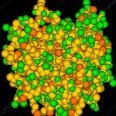The Color of Your Urine: What It Might Say About Your Health
-
Recently Browsing 0 members
- No registered users viewing this page.
-
Topics
-
-
Popular Contributors
-
-
Latest posts...
-
32
Military Thailand OKs Chinese Sub Engines After German Export Block
And the assumption that Chinese build quality is state of the art is also false. More often than not, chinese projects suffer from serious defect and poor quality components. -
50
America's best idea
How did Reagan finance the move to China? I'll wait for an answer. -
61
Transport Thai Airways Soars with $12 Billion Profits in Q2 2025
Sometimes, I find it quite difficult to remain polite when I see blatant ignorance, motivated by a petty grievance, rather than based in fact. Thai Airway's maintenance costs have been reduced because it has disposed of a large portion of its aged fleet. The longer an aircraft is in the fleet, the more likely the aircraft will have to undergo expensive inspections and overhauls. Thai Airways has 78 aircraft and the average age is approx. 10 years. The airline has 23 ABB 350 which are less than 8 years old. It's 10 B 787 are 10 years old or less. It's 20- workhorse AB 320's are approx. 11 years old, which is young compared to other airlines with AB320's. The oldest B777s and AB 330s are going to be retired soon once the new aircraft on order arrive. The question people should be asking of Thai is what is the change in financing and leasing costs? In previous years, the airline was burdened with expensive aircraft leases. The restructuring allowed that financial burden to be reduced. -
50
America's best idea
Stuff it. I lived those facts. Reagan was the first criminal traitor. A tradition they have continued with the current rapist in chief. -
8
Report Germany Puts Brakes on Arms to Israel Amid Gaza Strife
There is not a genocide. -
63
Politics Russia and UAE double down on trade, testing U.S. limit
And you will continue to post dumb comments.
-
-
Popular in The Pub

.thumb.jpg.3ee24d9400fb02605ea21bc13b1bf901.jpg)





Recommended Posts
Create an account or sign in to comment
You need to be a member in order to leave a comment
Create an account
Sign up for a new account in our community. It's easy!
Register a new accountSign in
Already have an account? Sign in here.
Sign In Now